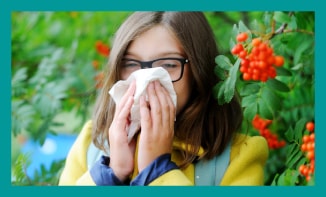Allergy Testing
 Allergy Testing – we aim to discover what is disrupting the immune system and causing allergies or sensitivities.
Allergy Testing – we aim to discover what is disrupting the immune system and causing allergies or sensitivities.
What are food allergies?
A food allergy is an immune system response. It is caused when the body mistakes an ingredient in food — usually a protein — as harmful and creates a defence system (antibodies) to fight it. An allergic reaction occurs when the antibodies are battling an “invading” food protein. The most common food allergies are shellfish, nuts, fish, eggs, peanuts, and milk.
What is food intolerance?
Food intolerance is a digestive system response rather than an immune system response. It occurs when something in food irritates a person’s digestive system or when a person is unable to properly digest, or break down, the food. Intolerance to lactose, which is found in milk and other dairy products, is the most common food intolerance.
How common are food allergies and intolerances?
Food allergies affect about 1 percent of adults and 7 percent of children, although some children outgrow their allergies. Food intolerances are much more common. In fact, nearly everyone at one time has had an unpleasant reaction to something they ate. Some people have specific food intolerances.
How can you tell the difference between an allergy and intolerance to food?
Food allergies can be triggered by even a small amount of the food and occur every time the food is consumed. People with food allergies are generally advised to avoid the offending foods completely. On the other hand, food intolerances often are dose related; people with food intolerance may not have symptoms unless they eat a large portion of the food or eat the food frequently. For example, a person with lactose intolerance may be able to drink milk in coffee or a single glass of milk, but becomes sick if he or she drinks several glasses of milk.
What are the symptoms of a food allergy?
Symptoms of a food allergy can range from mild to severe, and the amount of food necessary to trigger a reaction varies from person to person. Symptoms of a food allergy may include:
- Rash or hives
- Nausea
- Cramping stomach pain
- Diarrhoea
- Itchy skin
- Shortness of breath
- Chest pain
- Swelling of the airways to the lungs. Anaphylaxis is a very serious and potentially fatal allergic reaction that involves a sudden drop in blood pressure, loss of consciousness and body system failure.
What are the symptoms of food intolerance?
Symptoms of food intolerance include:
- Nausea
- Stomach pain
- Gas, cramps or bloating
- Vomiting
- Heartburn
- Diarrhoea
- Headaches
- Irritability or nervousness
What causes food allergies and intolerances?
Food allergies arise from sensitivity to chemical compounds (proteins) in food, even compounds that are found naturally in food. Food allergies are more common in people whose family members have allergies, suggesting a genetic — or hereditary — factor may be involved with the development of food allergies.
Food allergies develop after you are exposed to a food protein that your body thinks is harmful. The first time you eat the food containing the protein, your immune system responds by creating specific disease-fighting antibodies ( immunoglobulin E or IgE). When you eat the food again, it triggers the release of IgE antibodies and other chemicals, including histamine, in an effort to expel the protein “invader” from your body. Histamine is a powerful chemical that can affect the respiratory system, gastrointestinal tract, skin or cardiovascular system.
The allergy symptoms you have depend on where in the body the histamine is released. If it is released in the ears, nose and throat, you may have an itchy nose and mouth, or trouble breathing or swallowing. If histamine is released in the skin, you may develop hives or a rash. If histamine is released in the gastrointestinal tract, you likely will develop stomach pains, cramps or diarrhoea. Many people experience a combination of symptoms as the food is eaten and digested.
There are many factors that may contribute to food intolerance so at the Harley Street IBS & Autoimmune clinic, we will work with each patient to discover by allergy testing the factors underlying their symptoms. We also give IBS treatment where necessary. Our approach is non pharmaceutical, very kind and very gentle.
References
If you would like to book an appointment
Contact Deborah’s Medical Secretary for an appointment